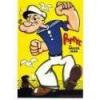

| Visitors Now: | |
| Total Visits: | |
| Total Stories: |

| Story Views | |
| Now: | |
| Last Hour: | |
| Last 24 Hours: | |
| Total: | |
Remembering Pearl Harbor Japan Attacks USA WWII – Next WWIII When? – Video

Published on Dec 7, 2013
December 7 2013 Breaking News Remembering Pearl Harbor Japan attacks USA WWII Next WWIII not if rather when? Last Days final Hour News Prophecy Update
December 7 1941 The attack on Pearl Harbor was a surprise military strike conducted by the Imperial Japanese Navy against the United States naval base at Pearl Harbor, Hawaii, on the morning of December 7, 1941 (December 8 in Japan). The attack led to the United States’ entry into World War II.
The attack was intended as a preventive action in order to keep the U.S. Pacific Fleet from interfering with military actions the Empire of Japan was planning in Southeast Asia against overseas territories of the United Kingdom, the Netherlands, and the United States. There were simultaneous Japanese attacks on the U.S.-held Philippines and on the British Empire in Malaya, Singapore, and Hong Kong.
From the standpoint of the defenders, the attack commenced at 7:48 a.m. Hawaiian Time.The base was attacked by 353 Japanese fighters, bombers and torpedo planes in two waves, launched from six aircraft carriers. All eight U.S. Navy battleships were damaged, with four being sunk. All but one were later raised, and six of the eight battleships returned to service and fought in the war. The Japanese also sank or damaged three cruisers, three destroyers, an anti-aircraft training ship, and one minelayer. 188 U.S. aircraft were destroyed; 2,402 Americans were killed and 1,282 wounded. Japanese losses were light: 29 aircraft and five midget submarines lost, and 65 servicemen killed or wounded. One Japanese sailor was captured.
The attack came as a profound shock to the American people and led directly to the American entry into World War II in both the Pacific and European theaters. The following day (December 8), the United States declared war on Japan. Subsequent operations by the U.S. prompted Germany and Italy to declare war on the U.S. on December 11, which was reciprocated by the U.S. the same day.
President Franklin D. Roosevelt to proclaim December 7 1941 a date which will live in infamy.
The first wave was to be the primary attack, while the second wave was to finish whatever tasks remained. The first wave carried most of the weapons to attack capital ships, mainly specially adapted Type 91 aerial torpedoes which were designed with an anti-roll mechanism and a rudder extension that let them operate in shallow water.[43] The aircrews were ordered to select the highest value targets (battleships and aircraft carriers) or, if these were not present, any other high value ships (cruisers and destroyers). Dive bombers were to attack ground targets. Fighters were ordered to strafe and destroy as many parked aircraft as possible to ensure they did not get into the air to intercept the bombers, especially in the first wave. When the fighters’ fuel got low they were to refuel at the aircraft carriers and return to combat.
Fleet submarines I-16, I-18, I-20, I-22, and I-24 each embarked a Type A midget submarine for transport to the waters off Oahu.
A third midget submarine grounded twice, once outside the harbor entrance and again on the east side of Oahu, where it was captured on December 8.A fourth had been damaged by a depth charge attack and was abandoned by its crew before it could fire its torpedoes
Japanese declaration of war
The Japanese attacked in two waves. The first wave was detected by U.S. Army radar at 136 nautical miles (252 km), but was misidentified as USAAF bombers arriving from the American mainland
The air portion of the attack on Pearl Harbor began at 7:48 a.m. Hawaiian Time (3:18 a.m. December 8 Japanese Standard Time,
Men aboard U.S. ships awoke to the sounds of alarms, bombs exploding, and gunfire, prompting bleary-eyed men to dress as they ran to General Quarters stations. (The famous message, “Air raid Pearl Harbor. This is not drill.”,
Ninety minutes after it began, the attack was over, as 2,386 Americans died (48 – 68 were civilians, most killed by unexploded American anti-aircraft shells landing in civilian areas), a further 1,139 wounded. Eighteen ships were sunk or run aground, including five battleships.
Of the American fatalities, nearly half of the total (1,177) were due to the explosion of Arizona’s forward magazine after it was hit by a modified 40 cm (16 in.) shell.


